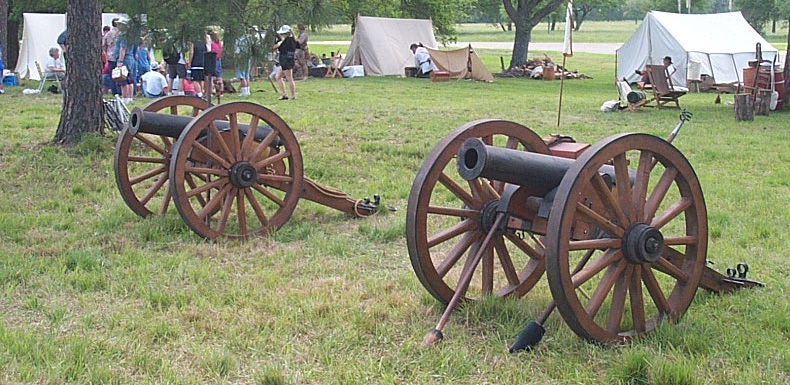

The following abstract is based on a speech I gave in 2010 to the Harris County Historical Society in Houston, Texas. To my knowledge it is the only current speech/article on the topic. The above picture is of the replica Twin Sisters located at the San Jacinto Museum of History which are used in the annual Battle of San Jacinto re-enactment.
As you can tell from the title, I have not found the Twin Sisters. But like hundreds, nay thousands before me, I am looking for them. Let me see a show of hands of who in this room are looking for the Twin Sisters or are thinking about looking. It's like looking for the Holy Grail. Every true blooded Texan wants the Twin Sisters found. What a discovery that would be!
Predominate Story:
What is fascinating to me about the search is all of the theories: (1) which cannon were the Twins (2) what did they look like and (3) what happened to them? I am sure that you hae heard all or most of these stories but I hope to organize, and dismiss most of them tonight.
The predominate story is that they were manufactured
in Cincinnati, Ohio in 1835 and shipped to Texas where they were
delivered to the Texian Army at Groce's Plantation. This is a
picture of a "hogshead" which was the type of shipping
container the Twins were packed into and shipped to Texas. 
From there the Twins travelled to the San Jacinto Battleground where they were instrumental in the defeat of Mexican General Santa Anna. Afterwards they were used in various ceremonies and celebrations. When Texas became a state in the Union the Twins were sent to the Federal Arsenal at Baton Rouge, Louisiana. When the southern states seceded from the Union, Texas asked Louisiana to return the Twins. The Twins were found, refurbished and shipped to Galveston where they participated in the Battle of Galveston in 1863. After the war they were seen in Houston in July of 1865 and then a month later in Harrisburg. Supposedly they were buried in Harrisburg by Confederate soldiers at that time.
While this may be the predominate story, it is not the only story about the Twins. All stories agree about the arrival of the Twin Sisters to Texas on March 28, 1836. And that they were ordered to Galveston Island. It's at this point that alterative stories come into play and (1) the identity of the guns at San Jacinto and (2) their subsequent history deviate.
Manufacture of the Twin Sisters:
But first, let me discuss what the Cincinnati Twin Sisters looked like. On November 17, 1835 in Cincinnati, Ohio a group of Cincinnati businessmen listened as Francis Smith, the agent from Texas requested the support of the people of Cincinnati for the war effort in Texas. Because of their interest in helping Texas, the group was called the "Friends of Texas." Texas landowner and Cincinnatian Nicholas Clopper chaired the meeting. Smith requested the group provide funds to purchase two six pound cannon with appropriated attendant equipment Attorney Robert T. Lytle offered a resolution in support of the Texas movement and recommended providing "Hollow Ware and other provisions." The resolution was unanimously adopted and a committee of five were appointed to make it happen. The term "Hollow Ware" was suggested in lieu of cannon since the United States government had chosen to be neutral on the war and in order not to offend Mexico, forbid the shipment of arms to Texas.
The closest cannon foundry was the Fort Pitt
Foundry (aka Pennsylvania Foundry) in Pittsburg. Fortunately,
Miles Greenwood of Cincinnati had apprenticed in a foundry in
Pittsburg and had recently organized Eagle Iron Works in Cincinnati.
With his equally experienced foundryman partner Joseph Webb, Eagle
Iron Works (aka Greenwood Foundry) agreed to cast the required
cannon. The foundry was located on the north side of the Miami
and Erie Canal between Main & Walnut Streets.
Mr. Greenwood was a future supporter of the
Ohio Mechanics Institute and the Emery Center was built on the
site of the foundry after his death. Presently the building is being converted to apartments.
Greenwood was an innovator and Eagle Ironworks was used to build
the first fire engine in Cincinnati, manufactured machinery to
mass produce muskets and rifles, built three turret for ironclad
gunboats, built cannon for the Civil War and his foundry was burned
by Confede
his death. Presently the building is being converted to apartments.
Greenwood was an innovator and Eagle Ironworks was used to build
the first fire engine in Cincinnati, manufactured machinery to
mass produce muskets and rifles, built three turret for ironclad
gunboats, built cannon for the Civil War and his foundry was burned
by Confede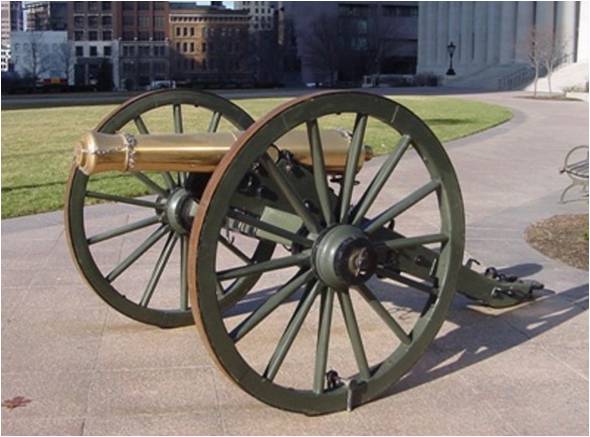 rates
when they were building Gatling Guns.
rates
when they were building Gatling Guns.
Who built the carriages is unknown. The design of the carriage and the cannon are also unknown. Debates center around whether the Twin Sisters were iron or bronze and whether they were four or six pounders. There was no uniformity in carriage design during the American Revolution. Leading up to the War of 1812 the U. S. Army adopted the Gribeauval carriage which was a split rail configuration. This reduced the overall weight of the gun and allowed for easier movement on the battlefield. However, the U. S. Army began studying the English Stock Trail (single trail) in the early 1830s but did not adopt it until 1836. Did Greenwood opt for the traditional carriage of the day or decide to put the Twins on the proposed new carriage. Here is a picture of a civil war bronze six pounder on a Stock Trail carriage that was produced by Miles Greenwood's Eagle Ironworks in accordance with the then U. S. Army ordnance pattern.
Presently I have fourteen (14) primary sources that say the Twins were iron. At least three (3) primary sources said they were brass, which probably was Bronze since Brass was too soft to be used in artillery. I expect these numbers to change over time as I discover new sources. Bronze was lighter but iron was cheaper and a more readily available material until the late 1830s.
The caliber is another hotly debated topic.
 Caliber is determined by the weight of the cannon ball
it fires. A four pounders fires a four pound ball with a diameter
of 3.156 inches. A six pounder fires a six pound ball with a diameter
of 3.656 inches. Four pounders were never manufactured for the
U. S. Army. Four pounders used by the U. S. Army were purchased
from Europe, particularly France. Presently I have ten (10) primary
sources that say they were four pounders. Nineteen (19) primary
sources state they were six pounders. A recent discovery at the
San Jacinto Battlefield supports the six pound argument.
Caliber is determined by the weight of the cannon ball
it fires. A four pounders fires a four pound ball with a diameter
of 3.156 inches. A six pounder fires a six pound ball with a diameter
of 3.656 inches. Four pounders were never manufactured for the
U. S. Army. Four pounders used by the U. S. Army were purchased
from Europe, particularly France. Presently I have ten (10) primary
sources that say they were four pounders. Nineteen (19) primary
sources state they were six pounders. A recent discovery at the
San Jacinto Battlefield supports the six pound argument.
So, the working description we will use to describe the Twin Sisters is "iron six pounders."
Artillery at San Jacinto:
As to the artillery at San Jacinto, there are several stories circulating in support the proposition that the Twins, let's call them the Cincinnati Twins, never made it to the Texian Army and thus were not at the Battle at San Jacinto. There was another set of cannon that looked alike that were used at San Jacinto. At least three other sets of cannon have been linked to the battle.
1. The Twins at San Jacinto were two brass
nine pound cannon donated to the Texian effort by the ladies
of Havana, Cuba. Donated prior to July 12, 1836 when they
were reported in New Orleans. Acting Secretary of War William
G. Cook wrote T. Toby and Son of New Orleans that they were to
turn over custody of the two cannon presented by the ladies of
Havana. In October 1837 the ship Thomas Toby wrecked on
Virginia Point near Galveston. Cannon were later retrieved and
purchased by the Galveston Artillery Club. Date unknown. To confuse
the issue, the State of Texas gave the Galveston Artillery Club
two additional brass cannon in 1858. Later twin brass cannon were
seen at the Galveston Artillery Club in 1874 and 1906 and believed
to be the Twin Sisters. It was assumed that they were later sold
for scrap. 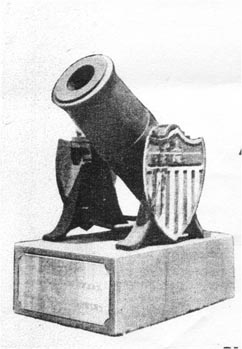
2. The Cayuga, an eighty-eight-ton side-wheeler was pressed into service by President Burnet in April 1836. Fort Travis was built on the north end of Galveston Island in early April and the iron four pound cannon from the Cayuga was its only weaponry. However some feel that the iron 4 pounders were the guns used at San Jacinto. Unfortunately there was no contact between the Texian Army and the Cayuga during April so those cannon could not have been transferred to the Texian Army. In 1842 the Cayuga cannon were given to Galveston Artillery Company and re-bored to 6 Pounders.
3. The least credible story is that of the Major General T. J. Chambers' iron 21 pound cannon. Chambers left Texas in February 1836 to raise troops for the Texian cause. He sent some troops and six 21 pound mortar type cannon back to Texas in 1837. In searching for the Twin Sisters in 1910 Superintendent of Public Buildings and Grounds W. C. Day found two of the Chamber cannon in Washington, D. C. and had them mounted in front of the Texas State Capital. See the adjacent picture.
Some people still believe those guns are the Twin Sisters even though they have an attached plaque on them stating that they were "Presented to the Republic of Texas by Maj. General T. J. Chambers." Besides arriving after April 21, 1836, they are of the wrong caliber for the Twins at the Battle of San Jacinto.
I think we can put all of these "alternatives" to rest. None of these were at San Jacinto.
Where did the Twin Sisters go?
What happened to the Twin Sisters? In addition to the Harrisburg theory mentioned above, the literature also suggests the following:
1. June 1836 General Rusk sent the Twin Sisters to re-enforce Goliad "The Twin Sisters being of brass and light weight, were consequently dispatched to Bahia…In crossing a creek some forty miles from Bahia the Twins Sisters were mired and caught in quicksand and could not be extricated. The expedition reached Bahia in July or August." However, there are official Ordnance Department reports on the Twin Sisters in 1840 and twice in 1841.
2. One lost on the 1841 Santa Fe expedition.
However, research has shone that this was one of the six cannon
purchased from Springfield, Massachusetts and that arrived in
Texas in fall of 1840. Also two Ordnance Department report in
1841 mention the Twin Sisters.
3. Reclaimed from the Colorado River. No details as to date, location,
by whom and where are they now?
4. Discovered in a Louisiana Bayou. No details as to date, location, by whom and where are they now?
5. Petrified on the plains of New Mexico. No details as to date and location.
6. Thrown into Galveston Bay in June 1865. No details where and by whom.
7. Sent to Washington, D. C. and placed in a National Museum. Both S. O. Young and independently W. C. Day confirmed that the Twin Sisters were not in Washington.
8. After the Civil War one of the Cincinnati Sisters was seen near the Land Office in Austin in 1871-72. This seems to be a credible sighting since there was an etching stating this was the gift of the citizens of Cincinnati, Ohio. If this is true and there are no 'sightings' after 1872, then maybe the Twin Sisters are somewhere in Austin, probably in a government warehouse, and forgotten.
Cincinnati Twins vs Louisiana Twins:
Another interesting theory says that the Cincinnati Twins did not go to the Federal Arsenal in Baton Rouge, Louisiana in 1849 with other Texas armaments. The Twins stayed in Texas.
1. Judge William P. Hamblen of Houston, knew the guns and that up to 1861, when the Civil War began, they were in and around Houston, often being used in parades and celebrations. Also he stated specifically that the two guns sent to Texas by the State of Louisiana (about 1861) were NOT the 'Twin Sisters' as was erroneously supposed to be the case. He maintained that the 'Twin Sisters' never left Texas, and his personal description of the guns tallies in every respect with the description according to Elizabeth Rice Stapp (one of the twin girls that dedicated the guns).
2. At the opening ceremony for the BBB&C Railroad in 1853 which was at Thomas Point (3 miles west of Harrisburg), one of the Sisters was on hand and fired a salute.
3. When Sam Houston was elected Governor in 1859 the Twins were in Houston and were fired in celebration. One discharged but the second one was discovered spiked. This prank of spiking the twins appeared to have a history around this period of time..
4. S. O. Young said he saw them about 1860 in Market Square in Houston with kids playing with them.
They were used only on ceremonial occasions. Young identifies the marking on the cannon as the name of the manufacturer on the butt of the tube and the dedication of from Cincinnati just forward of the touch hole on the top of the tube. He went on to say that he saw one of the Sisters near the Land Office in 1871-72 and confirmed the inscription.
In Conclusion, maybe Hamblen was right that the Cincinnati Twins did not leave the state. It is possible that the Republic government decommissioned the Twins as active ordnance subject to Federal confiscation and labeled them as cermemonial pieces which is what the sightings indicated. This would mean that the refurbished guns from Louisiana were simply look alike duplicate guns and not the Cincinnati Twin Sisters.
Key Questions:
Two questions need to be asked. First, did the Cincinnati Twins have the dedication etched on the barrel or tube? The second is, did the Louisiana Twins also have the dedication on the tube in addition to the plaque on the carriage?
1. Cincinnati Twins dedication: An engraving acknowledged the gift from Cincinnati. The sources that saw the acknowledgement however remember different phrases.
a. Y. O. Young state it was "Presented
to the Republic of Texas by the Ladies of Cincinnati" that
was engraved on the top of the tube in front of the touch hole
and the manufacturer name on the butt of the tube.
b. Dr. J. O. Dyer's father "saw these guns at Velasco (taken there after the Interim Government moved from Galveston) and then again many times on the journey from Velasco to Bahia (the General Rusk program), stated they had (1) the maker's name graven in small letters on the butt, (2) whilst on top in large letter was the legend: 'The gift of Cincinnati.'"
c. "Luke Falvel, the famous ship captain
of the revolution, who lived for many years on Twentieth and Broadway
(in Galveston), also told Colonel N. B. Yard of the inscriptions
on and the fine workmanship and polish of the guns, which looked
like "imported " ones. He helped to unpack the pieces
from the hogsheads at Velasco, and removed the verdigris which
formed on them during their long voyage."
d. Mitchell, C. S. (g'son of Elizabeth Rice): two iron six-pounders.
On each gun was a brass plaque bearing the inscription, "Presented
to the Republic of Texas by the Citizens of Cincinnati."
e. Dr. H. M. Graves letter stating he knew the guns well, long, beautiful iron 6 pounders with brass plates attached, inscribed as follows: Presented to the Republic of Texas by the Citizens of Cincinnati. Graves was one of the Confederate soldiers who hid the cannon at Harrisburg in 1865.
2. Louisiana Twins dedication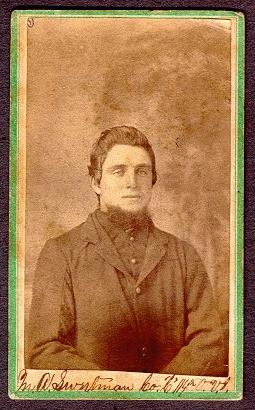 :
The dedication placed on the carriages by the Louisiana legislature
read " Twin Sisters, This gun was used with terrible
effect at the battle of San Jacinto. Presented to the State of
Texas by the State of Louisiana, March 4, 1861. Signed by Henry
W. Allen, Charles G. Brusle and William G. Austin, Committee of
Presentation" This was confirmed by M. A. Sweetman
of Ohio Infantry. The question is: did these cannon also have
the Cincinnati dedication? Sweetman was the Union soldier that
spotted the Twins behind the Kennedy Building in downtown Houston
in July 1865 and identified them by the plaque on the carriages.
:
The dedication placed on the carriages by the Louisiana legislature
read " Twin Sisters, This gun was used with terrible
effect at the battle of San Jacinto. Presented to the State of
Texas by the State of Louisiana, March 4, 1861. Signed by Henry
W. Allen, Charles G. Brusle and William G. Austin, Committee of
Presentation" This was confirmed by M. A. Sweetman
of Ohio Infantry. The question is: did these cannon also have
the Cincinnati dedication? Sweetman was the Union soldier that
spotted the Twins behind the Kennedy Building in downtown Houston
in July 1865 and identified them by the plaque on the carriages.
Conclusion: Harrisburg is probably the answer
I believe I have explained why most of the
various theories are invalid. What remains is that the Cincinnati
Twins were probably:
1. iron six pounders,
2. they had an engraving identifying both the dedication from
Cincinnati and also the name of the foundry, and
3. they were the cannon at the Battle of San Jacinto.
Only two questions remain:
1. Whether the Louisiana Twin Sisters were
the same cannon as the Cincinnati Twins or were there in fact
two sets of twins?
2. Who is buried in Harrisburg?
Henry North Graves, his servant Joe and four other Confederate soldiers were the last to see the Twins. They drug the guns into the woods (880# each) and buried them along a bayou. Graves returned in 1895, 1905 and 1920 and was unable to locate the area because so much had changed in Harrisburg. Most searches have been in Harrisburg and all have been unproductive. Thus far!
Since we have no other alternative sites to investigate, we must focus on Harrisburg. Here is a map of the possible location.
 My guess is that the Twins are buried in a northern
direction from the old G. H. & H. depot which was located
near the intersection of Manchester and Kellogg streets. Graves
said they were coming from Galveston and only the G.H.& H.
railroad runs from Galveston. The old B. B. B. & C. depot
at the wharf on Buffalo Bayou is not the depot mentioned by Graves.
However, the two rail lines cross at the G. H. & H. depot
with side tracks to allow for unloading and reloading of shipments
from Houston to Galveston. Since the tracks were of different
guage, there could be no direct connection between the two lines.
My guess is that the Twins are buried in a northern
direction from the old G. H. & H. depot which was located
near the intersection of Manchester and Kellogg streets. Graves
said they were coming from Galveston and only the G.H.& H.
railroad runs from Galveston. The old B. B. B. & C. depot
at the wharf on Buffalo Bayou is not the depot mentioned by Graves.
However, the two rail lines cross at the G. H. & H. depot
with side tracks to allow for unloading and reloading of shipments
from Houston to Galveston. Since the tracks were of different
guage, there could be no direct connection between the two lines.
Most of the target land (designated in green) is owned by the City of Houston and is undeveloped at this time. However, comparing the 1915 USGS topographical map with a 1990 topo map you can see that that area was the location of fill material from the dredging of probably Brays Bayou when it was straighten out and widened.. The depth of the fill has made it all but impossible to use regular metal detectors and often requires the use of a back hoe instead of a shovel. It would be beneficial to know where everyone else has dug over the years so we can eliminate those sites. Still, more research needs to be done before we are ready to dig.
When they find the tubes, will they have the dedication from Cincinnati? If yes, then we have found the Cincinnati Twin Sisters. If not, then probably we have found the Louisiana Twins which have a Civil War history of their own. And the search for the Cincinnati Twins would continue.
In the mean time I will be digging in archives, libraries and private collections to refine what we are looking for and to define a new target location! My objective is not to personally find the Twin Sisters, but rather, to have them found. If I am there, great. If others can use this material to locate the Twins, then my job is done. I just hope that the Twins are kept in the public arena and not hidden in a private collection. The Twins belong to the people of the State of Texas.
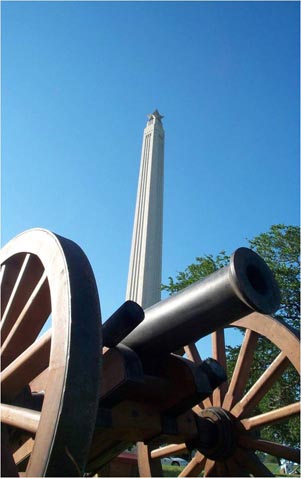
Return to Twins Sisters
1.09.2017